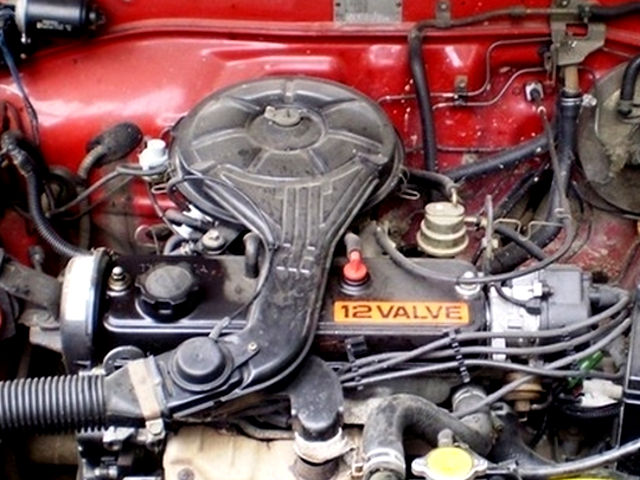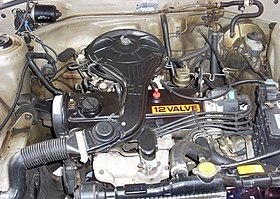Toyota Tazz: A Compact Car That Offers Big Value and Long-Term Durability
Toyota Tazz: A Compact Car That Offers Big Value and Long-Term Durability
Blog Article
Check Out the Latest Patterns in Engine Modern Technology With Tazz
In the rapidly evolving landscape of automotive technology, Tazz stands at the center, highlighting substantial improvements in engine systems that prioritize both development and sustainability. From hybrid engines that maximize gas efficiency to the emergence of hydrogen gas cells, the patterns shaping modern powertrains are not just improving performance yet likewise dealing with critical ecological difficulties.
Hybrid Engine Innovations
Crossbreed engine developments represent a crucial shift in automotive modern technology, integrating the benefits of inner combustion engines with electrical propulsion systems. This combination not just improves fuel effectiveness but additionally decreases exhausts, meeting significantly rigid environmental guidelines. By utilizing both power sources, hybrid engines can maximize performance, providing power when needed while saving gas throughout less requiring driving conditions.
Current developments in crossbreed innovation include enhancements in battery performance and regenerative braking systems. These technologies enable better energy recuperation throughout deceleration, which can be rerouted to aid in acceleration or power accessory systems. Furthermore, makers are concentrating on compact styles and light-weight products to optimize the efficiency of hybrid powertrains.
The growth of plug-in hybrids has also broadened the marketplace, making it possible for vehicle drivers to charge their cars utilizing common electric outlets. This attribute often allows for significant all-electric variety, additional reducing reliance on standard gas. tazz. As the vehicle market remains to progress, hybrid engine innovations are anticipated to play a critical duty in linking the void in between standard automobiles and completely electric designs, offering a transitional service that accommodates diverse customer demands and preferences
Advancements in Electric Powertrains
The automotive landscape is rapidly evolving, with electrical powertrains becoming a leading force in sustainable transportation. Breakthroughs in electrical automobile (EV) innovation are considerably enhancing individual, performance, and performance experience. Secret innovations consist of enhancements in battery chemistry, which have actually boosted energy thickness, decreased billing times, and prolonged overall battery life.
Solid-state batteries, for instance, guarantee to revolutionize the marketplace by offering better security and efficiency contrasted to traditional lithium-ion cells. In addition, developments in regenerative stopping systems are allowing lorries to recuperate power during slowdown, contributing to general efficiency.
Along with battery innovation, electrical motor layouts are ending up being a lot more sophisticated. Developments such as incorporated electric motors and advanced thermal administration systems are aiding to optimize power shipment and minimize weight, inevitably enhancing car characteristics.

Jointly, these breakthroughs emphasize the dedication to shift in the direction of cleaner, a lot more effective transportation services, positioning electric powertrains at the center of automotive innovation.
The Surge of Hydrogen Gas Cells
Significantly, hydrogen gas cells are acquiring traction as a viable choice to typical inner combustion engines and battery electric vehicles. This modern technology takes advantage of the chemical energy stored in hydrogen, converting it right into electrical energy with an electrochemical reaction with oxygen. The key by-product of this process is water, making hydrogen gas cells an eco friendly option with absolutely no discharges at the tailpipe.

Car manufacturers are increasingly buying hydrogen gas cell modern technology, recognizing its capacity for long-range applications and fast refueling capacities that rival conventional fuels. Furthermore, fields such as heavy-duty transport and public transit are especially appropriate for hydrogen gas cells, where battery electrical remedies might fail due to weight and range limitations.
As research and investment remain to broaden, hydrogen fuel cells are poised to play a considerable function in the future landscape of tidy transport and power options.
Enhancements in Internal Burning Engines
Advancements in inner burning engine (ICE) modern technology are changing standard automobiles to fulfill modern-day ecological requirements and performance expectations. One of the most substantial improvements entails the assimilation of sophisticated fuel shot systems. These systems enhance the air-fuel mix, improving combustion performance and causing minimized discharges. Direct fuel shot, as an example, enables for better atomization of gas, bring about even more total combustion and boosted power outcome.
Additionally, turbocharging has actually gotten prominence, permitting smaller engines to supply higher efficiency without the weight of larger engines - tazz. This technology not just boosts performance but additionally contributes to reduce fuel usage. Variable shutoff timing systems are likewise being refined, making it possible for engines to adapt to numerous driving problems for improved torque and responsiveness
Furthermore, the use of lightweight products in engine this contact form building is ending up being basic, additional boosting fuel efficiency by decreasing total automobile weight. Engine control units (ECUs) are significantly innovative, making it possible for real-time modifications that optimize efficiency and discharges.
These improvements jointly indicate a crucial shift in ICE innovation, straightening with global sustainability objectives while still giving the performance chauffeurs expect from their vehicles. As the market advances, these improvements continue to form the future of conventional vehicle design.
Future Trends in Engine Efficiency
Considerable improvements in engine performance are anticipated as producers focus on integrating innovative modern technologies to meet stringent environmental policies and consumer demands. The shift towards electrification, hybrid systems, and different gas is improving the auto landscape, driving innovations that enhance fuel economy and decrease discharges.
One of the essential trends is the implementation of advanced materials and manufacturing techniques. Light-weight compounds and high-strength alloys add to decreased car weight, thus improving overall performance. In addition, the fostering of turbocharging and variable valve timing innovations permits improved power result from smaller sized engines, additionally improving fuel economic situation.

Conclusion
To conclude, the exploration of engine modern technology exposes significant improvements that prioritize sustainability and performance. Innovations in crossbreed engine systems, electric powertrains, and hydrogen gas cells show a commitment to lowering emissions while boosting performance. Moreover, improvements in interior burning engines and a concentrate on light-weight materials contribute to total engine efficiency. As the vehicle sector continues to progress, these fads will play a vital duty fit a cleaner and more lasting future informative post for transportation.
From crossbreed engines that maximize fuel effectiveness to the introduction of hydrogen gas cells, the fads forming modern powertrains are not only improving efficiency yet also dealing with essential environmental challenges.Crossbreed engine technologies stand for a pivotal shift in automotive technology, integrating the benefits of internal combustion engines with electric propulsion systems.Additionally, turbocharging has acquired importance, enabling smaller engines to deliver higher performance without the weight of larger engines. Additionally, the fostering of turbocharging and variable shutoff timing technologies allows for improved power output from smaller engines, even more enhancing gas economic climate.
Enhancements in interior burning engines and a focus on light-weight products add to general engine efficiency.
Report this page